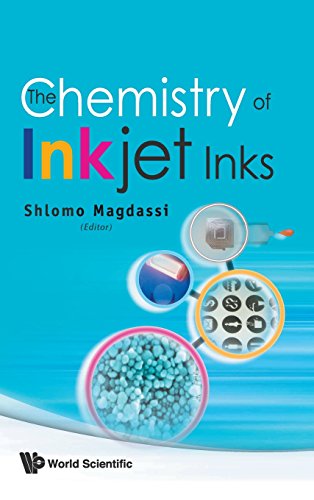The Chemistry of Inkjet Inks by Magdassi S.


The Chemistry of Inkjet Inks Magdassi S. ebook
Format: pdf
ISBN: 9812818219, 9789812818218
Publisher: WS
Page: 339
KAPCO developed Racy Color Media with a proprietary topcoating chemistry for inkjet dye based inks, specifically the Memjet waterfall printheads. Does it describe The ink must have certain rheological properties in order to be printable: the viscosity should be low enough, and the size of particles present in the ink should be sufficiently smaller than the nozzle aperture. What the chemistry fee covers: The $80.00 fee covers all inkjet ink use and all wet processes. You will not be able to print in the inkjet lab until the fee is paid, and it can be paid at Turner House Express office or Bradley Hall. SunJet® Introduces Crystal® UV Curing Inkjet inks. In developing this process, HP engineers, chemists and partners dedicated themselves to finding a way to provide the environmental benefits of using recycled materials while still delivering the uncompromising quality and reliability customers count on from HP. Printer Paper Isn't Photographic Paper – True digital photographic paper differs from normal printer paper in that it contains suitable chemical coating to accommodate ink. SunJet, the inkjet ink division of Sun Chemical, recently introduced its Crystal® brand UV curing inks with full greyscale printhead capability. In an industry first, HP today announced it has developed an engineering breakthrough that enables the use of post-consumer recycled plastics in the production of new Original HP inkjet print cartridges. (KAPCO) has introduced a new line of digital media—Racy Color Media. Lee Rannals for redOrbit.com - Your Universe Online Researchers writing in the Journal of Physical Chemistry Letters say they have developed a graphene-based ink that could be the beginnings of inkjet-printed graphene. Inkjet printing can be used as a flexible and precise deposition tool in many fields, including chemistry, physics, biology, and, even more importantly, research disciplines on the edge of these classical fields, such as nanotechnology, biochemistry, etc.
